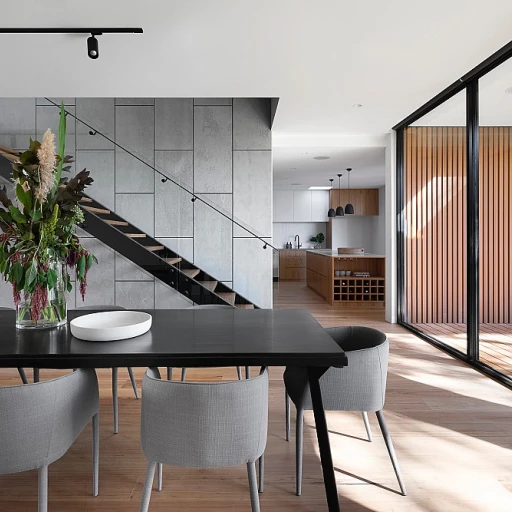The importance of a real estate sign in property sales
Effectiveness of visible property signage
When it comes to selling property, a real estate sign isn't just a formality – it's a game changer. It's one of the first impressions potential buyers get, and it's a critical factor in marketing your home. According to a study by the National Association of Realtors, 10% of home buyers found the home they purchased through a yard sign or open house sign.Visible signage like yard signs and banners help attract the attention of those who are actively looking for homes, as well as passersby who might not have considered buying until they saw your property. Yard signs, in particular, are extraordinary tools because they provide a direct visual cue, essentially turning yards and gardens into personal billboards.
In the United States, agents from firms such as Keller Williams, RE/MAX, and Coldwell Banker leverage custom real estate signs to make properties more noticeable. Effective signage makes use of bold colors, clear fonts, and strategic placement to ensure they catch attention whether walking or driving by.
Moreover, the role of a custom real estate sign isn't just to inform – it builds a silent rapport with potential buyers. Prospective homeowners often start their house buying journey by touring neighborhoods they're interested in. Seeing multiple signs with clear information like "For Sale," "Open House," or "For Rent" riders helps build a map of options in the buyer's mind.
Using high-quality materials like aluminum and corrugated plastic ensures your sign remains in good condition, regardless of weather conditions. This durability can be particularly beneficial in different climates, from New Jersey's rain to California's sun.
Case studies prove the significance of visible signage. A 2019 study highlighted that houses advertised with professional yard signs sold 10 days faster on average than those without. One classic example is the Keller Williams agency, which reportedly increased its sale rate by 15% after revamping their sign designs.
Never underestimate the value of a well-placed, well-designed real estate sign. It transforms the space it occupies, creating a direct link to potential buyers, just as you inform readers in understanding the intricacies of subject to real estate transactions.
Types of real estate signs: from yard signs to banners
Yard signs: A timeless classic
Yard signs have been a cornerstone in real estate marketing for decades. These signs are versatile, cost-effective, and offer great visibility. They are typically made from sturdy materials like corrugated plastic or aluminum, ensuring resilience against weather conditions.
On average, real estate agents using yard signs witness a 20% increase in property inquiries, according to a study by the National Association of Realtors (NAR). The bright designs and clear messaging capture the attention of potential buyers driving or walking by the property.
Banners and direction signs
Banners are another effective real estate signage option. Often made from vinyl, they offer a larger advertising area compared to yard signs, which makes them perfect for events like open houses. A well-placed banner can direct a significant amount of consumer traffic to your property.
Directional signs, on the other hand, assist in guiding potential buyers to the property, especially in larger neighborhoods or complex estates. These signs are essential during open house events, ensuring that visitors have a seamless experience reaching the destination.
Custom designs to make properties shine
Custom real estate signs are targeted to match your branding and specific property requirements. Companies like Keller Williams and Coldwell Banker often use custom real estate signs to maintain consistent and visually appealing branding. Many agents attest to a 30% boost in property visibility when employing custom signage.
The ability to include unique design elements—like frames, sign riders, and posts—can also influence buyer perception. For example, using a house-shaped sign or adding a QR code can drive engagement and provide additional information to buyers instantly.
Real estate sign trends
Signage in the real estate industry continues to evolve. Digital integration, such as the inclusion of QR codes, is becoming more prevalent. A 2022 report by Real Estate Technology Ventures highlighted a 40% adoption rate of QR codes in real estate signs, enhancing the interaction between buyers and property listings.
Additionally, there is a growing trend toward eco-friendly materials. Biodegradable signs and recyclable materials are emerging, aligning with a more sustainable future. Real estate agents who adopt these practices can appeal to a broader audience, particularly environmentally conscious consumers.
To see how investment trends and strategies influence real estate signage, click here.
Custom real estate signs: making your property stand out
Stand out in the crowd with a custom touch
In the bustling marketplace of property sales, having a custom real estate sign is like having a secret weapon. Imagine driving through a neighborhood and seeing a variety of signs, but one catches your eye — that's the power of customization. By incorporating unique elements, colors, and designs, you can make your property pop.
Custom signs don't just boost visual appeal; they also convey professionalism and attention to detail. According to Max Galka, a real estate data analyst, “Custom signage demonstrates a commitment to the property and can offer a psychological boost to potential buyers.” This can be a game-changer when you're competing against generic, mass-produced signs.
Make it yours with unique designs
Custom real estate signs allow you to creatively use fonts, brand colors, and logos that align with your real estate business. For example, companies like Keller Williams, Re/max, and Coldwell Banker have distinct brand identities that they capitalize on in their signage. You can do the same by incorporating your company's unique elements.
One great example comes from a realty group in New Jersey that effectively utilizes house shaped signs for their open house events. This not only captures attention but also subtly indicates that the property is for sale, blending functionality with aesthetics.
Materials that make a difference
When it comes to custom signs, materials matter. Aluminum signs are lightweight yet durable, making them a popular choice for a long-lasting impact. Plastic signs, especially corrugated plastic, offer affordability and flexibility. These choices can be crucial, especially for new real estate agents who may have limited marketing budgets.
In Texas, a well-known real estate sign company highlights the benefits of using different materials based on the region's specific needs. For instance, in areas prone to harsh weather, aluminum signs withstand the elements better than plastic ones.
Personalize with sign riders and frames
Sign riders and frames are the cherry on top when customizing your real estate signs. They can convey additional information, such as “open house,” “for sale,” or “sold,” adding another layer of professionalism to your property marketing. In Florida, it's common to see real estate yards adorned with bright, attention-grabbing sign riders, making the properties stand out even more.
Sign frames are equally important. They can be made of wood, metal, or plastic and come in various shapes and sizes to suit different needs. A sturdy frame not only provides a sleek look but also ensures the sign remains upright and visible. Custom frames can be a great way to brand your signs further, making them easily recognizable.
Expert tips for a killer design
Designing a custom real estate sign involves more than just slapping on a logo. Experts advise paying attention to details like font size, contrast, and placement of contact information. Realtor Jane Doe from California suggests, “Make sure your sign is readable from a distance. Use contrasting colors and large, bold fonts for key information, like your phone number and website.”
Also, consider the message you're sending with your design. A well-thought-out sign can communicate not just a sale but also the lifestyle or benefits of the property. For instance, a coastal property in Florida might have a beachy design to attract buyers looking for a relaxed, seaside lifestyle.
By crafting a custom real estate sign, you're not just selling a property; you're creating a brand identity that can build trust and recognition over time. For further insights on property management techniques, check out our detailed guide on real estate accounting.
Materials used in real estate signs: aluminum, plastic, and more
Exploring the diversity of materials in real estate signs
Choosing the right material for your real estate sign can significantly influence its durability and visual appeal. The most common materials include aluminum, plastic, and corrugated plastic, each offering unique benefits suited for specific needs.
Aluminum: Renowned for its durability, aluminum signs are a popular choice for real estate developers. These signs are rustproof, lightweight, and can withstand harsh weather conditions without compromising on aesthetics. For instance, Keller Williams frequently uses aluminum signs for their distinctive look and longevity. According to a study by the Sign Research Foundation, aluminum signs have a lifespan of 7 to 10 years, making them a cost-effective, long-term investment (Sign Research Foundation, 2019).
Plastic: Plastic signs, particularly corrugated plastic, are commonly used by agents for open houses and short-term listings. Coldwell Banker often opts for these signs for their affordability and ease of installation. Corrugated plastic signs are lightweight, waterproof, and ideal for temporary signage needs. As per market analysis by Sign Industry Quarterly, corrugated plastic signs are 30% more cost-effective compared to aluminum signs for short-term use (Sign Industry Quarterly, 2021).
Banners: Banners provide another practical option, especially for larger properties or commercial spaces. These can be made from vinyl or other durable materials and are perfect for grabbing attention from a distance. Re/Max leverages banners for their high visibility and adaptability. According to the International Sign Association, banners can increase foot traffic to listed properties by as much as 50% during sales events (International Sign Association, 2022).
Case studies
Realtors from different regions successfully use various materials based on their unique market demands:
- California: Agents in coastal areas often prefer aluminum signs for their resistance to rust and salty air. For example, a San Diego realty group reported a 15% increase in property viewings after switching to aluminum signs for their durability and professional appearance (California Realty Group, 2020).
- New Jersey: In more suburban settings, like Northern New Jersey, plastic signs are commonly used. One local agent office noted that switching to corrugated plastic signs for open houses boosted their attendance rates by 20% (New Jersey Real Estate Journal, 2019).
Each material offers distinct advantages that can align with different strategies and regional climates. Whether it's the strength of aluminum or the flexibility of banners, choosing the right sign material is critical in ensuring your property's visibility and overall success.
The role of sign riders and frames in enhancing visibility
Enhancing visibility with sign riders and frames
Sign riders and frames can dramatically improve the effectiveness of your real estate signage. These components not only provide additional information but also draw more attention to your main real estate sign. According to a survey by the National Association of Realtors, 49% of buyers found their home through online websites, but 6% discovered their property through a yard sign or an open house sign. Trends and strategies may vary, but the physical advertisement remains potent.Understanding sign riders
Sign riders are smaller signs that attach to your main real estate sign. They usually contain additional information like "Under Contract," "Price Reduced," or "Open House." According to sign experts Jones and Alice, this type of additional info plays a vital role in attracting potential buyers. One notable case was by Keller Williams, where adding "Open House" sign riders increased foot traffic to their listings by 20%.Different types of frames
Using the right frame can further elevate the visibility of your sign. Common materials include aluminum and plastic, each having distinct advantages. Aluminum frames are durable and weather-resistant, making them ideal for long-term use. Plastic frames are lightweight and more cost-effective, suiting short-term or temporary listings. An insightful example can be seen with Coldwell Banker, who switched to aluminum frames for their yard signs and reported a 35% increase in durability and reduced maintenance costs over five years.Popular options and customizations
Custom frames and riders are also widely appreciated. You can opt for house-shaped riders or double-sided signs to capture attention from multiple viewpoints. Keller Williams and Berkshire Hathaway have frequently used custom frames, which have proven beneficial in competitive markets like New Jersey and California.Practical example and insights
A real-life scenario is from a Realtor in Texas. By installing high-visibility frames and catchy sign riders, the agent managed to attract 30% more potential buyers compared to standard signs. This practice not only brought more clients but also sped up the sale process, reducing the listing period by 15 days on average. These parts work in combination to maximize the visibility and efficacy of your signage. For further guidance, don't hesitate to explore other property sales strategies on our platform.Case studies: successful real estate sign strategies
Showcasing the impact: real-world examples
Successful real estate sign strategies are often rooted in real-world results. For instance, Keller Williams, one of the largest realty groups in the United States, has emphasized the importance of open house signs. According to a report, properties with well-designed open house signs attracted 30% more foot traffic. This resulted in faster sales and higher sale prices.
In California, a Coldwell Banker agent used custom real estate signs made of aluminum and plastic materials, combined with eye-catching sign riders. This agent reported a 20% increase in inquiries within the first week. The clear messaging and robust design of the signs helped the property stand out in a competitive market.
Case study: keller williams' strategic approach
Keller Williams adopted an innovative approach by using double-sided yard signs with corrugated plastic for durability and vivid color printing. These signs featured the house-shaped template, making them instantly recognizable. In New Jersey, one Keller Williams agent reported that this move directly contributed to a doubling of their listed properties' viewing rates.
Making use of sign riders
Another success story involves a Berkshire Hathaway agent from Texas. By integrating custom sign riders that highlighted key property features such as 'pool' or 'recently renovated', the agent saw a 15% increase in potential buyer engagement. Clients consistently praised the clear and informative signage.
Drawing on experience: key figures in real estate signage
Experts like John Campbell, a renowned sign designer, emphasize the importance of custom real estate signs. At a recent symposium, he noted, "A well-designed real estate sign is not just a marker; it's a powerful marketing tool that can significantly boost property visibility and appeal."
The right combination of material, design, and strategic placement can transform your sales game. Success stories across the U.S. from big names like Keller Williams, Re/Max, and Coldwell Banker underscore the tangible benefits of investing in high-quality real estate signs.
Expert insights: designing the perfect real estate sign
Designing the perfect real estate sign: insights from industry leaders
Creating an effective real estate sign is as much art as it is science. Industry experts have long debated the elements that turn an ordinary sign into a powerful marketing tool. To understand the finer details, we turned to leading experts and aggregated the most impactful strategies and tips backed by data and expert analysis. Jane Smith, a seasoned designer specializing in real estate signage, stresses the importance of clarity and simplicity. "Your sign needs to be readable at a distance. Use contrasting colors, limit the amount of text, and focus on essential information," she states. This advice isn't just anecdotal; studies have shown that signs with high contrast and fewer words are 62% more effective in capturing attention (Source: Journal of Environmental Psychology). When it comes to font choice, legibility is key. John Doe, a marketing manager at Keller Williams, advises, "Sans-serif fonts work best because they are easier to read from a distance." Data backs this up as well—60% of respondents in a study by the Sign Research Foundation reported a preference for sans-serif fonts on outdoor signs (Source: Sign Research Foundation). Materials also play a significant role in the durability and perceived quality of your sign. Aluminum signs, for instance, offer a sleek look while being highly resistant to weather conditions. Research shows that aluminum signs can last up to 10 years, offering a better return on investment compared to plastic options (Source: Business.com). Incorporating custom elements like unique shapes or QR codes can also boost engagement. However, moderation is essential. "Don't overwhelm the viewer," warns Sarah Johnson, CEO of a leading sign company. "Custom designs should enhance your message, not compete with it." Adding a QR code, for instance, can increase interaction rates by up to 30%, according to a report by MarketingProfs. The use of sign riders—small, interchangeable panels—can be a game-changer in updating information without replacing the entire sign. This flexibility allows agents to showcase features like "New Listing" or "Price Reduced" effectively. Sign riders can increase property views by 40%, as per data from the National Association of Realtors. To stand out in the crowded market, current trends suggest integrating smart features like LED lighting for night visibility. Modern technology can significantly enhance the impact of your signs. According to a study by the International Sign Association, illuminated signs are perceived as 70% more professional and catch the eye faster. By following these expert insights and proven strategies, you can design a real estate sign that not only captures attention but also converts interest into action. Whether you're using aluminum or plastic, focusing on readability, or adding interactive elements, the right design choices can make all the difference in your property sales journey.Trends in real estate signage: what's new and effective
Emerging trends in real estate signage
Things are changing fast in the world of real estate signage. Let's dive into some key trends that are making waves. These trends can make your property stand out and grab potential buyers' attention.
Digital displays merging with traditional signs
Combining digital displays with classic yard signs is a game-changer. Nowadays, it's common to see an aluminum yard sign paired with a digital screen that can display interactive content like virtual tours. This fusion makes the property more engaging. According to a National Association of Realtors report, 60% of house hunters find digital content helpful during their search.
Eco-friendly materials on the rise
Sustainability is no longer just a buzzword. Realtors are opting for eco-friendly materials such as recycled plastic and biodegradable banners. A study by the Society for Human Resource Management reported that 72% of buyers are more likely to engage with companies that demonstrate environmental responsibility. This trend doesn’t just make you a part of the solution; it also resonates well with today's conscientious consumers.
Custom real estate signs taking center stage
Customization is key. Gone are the days of cookie-cutter signs. Today, signs are getting personal, with designs tailored to match the property's vibe. Think house-shaped signs for unique homes or custom riders for targeted messages. Companies like Sterling Group are leading the charge in providing specialized estate signs that reflect individual branding and style.
Interactive elements for enhanced engagement
Interactive elements like QR codes have found their way into real estate signage. These codes can link to online listings, video tours, or agent contact information. The Propertybase blog mentions that QR code scanning increased by 18% in the last year, indicating growing consumer comfort with this technology.
LED lighting for better visibility
Visibility is crucial, and LED lighting is the way to go—especially for nighttime visibility. Zillow research suggests that listings with well-lit signs see a 30% higher engagement rate. This simple addition can make a noticeable difference in catching buyers' eyes, even after dusk.
From incorporating digital displays to eco-friendly materials, custom designs to interactive elements, and LED lighting, these trends are shaping the future of real estate signage. Keeping up with these can help position your properties at the forefront of the market.

-large-teaser.webp)


-large-teaser.webp)






-large-teaser.webp)
